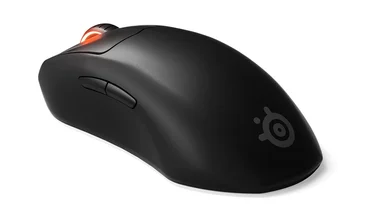To help us provide you with free impartial advice, we may earn a commission if you buy through links on our site. Learn more

If your laptop’s your sole computer, you’ll know the hassle of having to plug in a myriad range of cables when you get back to your desk in order to connect an external keyboard, mouse, monitor and other peripherals. Of course, a dedicated docking station for your computer is one way to go, but these tend to be expensive and the proprietary connections used mean that upgrading your laptop could require you to buy a different dock. HP’s USB 2.0 Docking Station is one alternative. Plugging into your laptop via USB it acts as an external sound card, four-port USB hub, Ethernet adaptor and, via DisplayLink, DVI and VGA outputs. When you’re at your desk, you’ll only need to plug in a single USB cable to start using an external keyboard, mouse, display and other peripherals. It’s a neat and convenient way of working. The soundcard, Ethernet adaptor and USB hub were all recognised and installed immediately by our Windows 7 laptop; the display adaptor used to drive the VGA and DVI ports require a separate DisplayLink driver to be installed. HP includes the driver on the dock’s flash memory, but the version we tested was out of date and we had to download the latest Windows 7 driver from DisplayLink’s website. Once the driver’s installed you can enable a second monitor in Windows, as though it was directly connected to an output on your laptop. As with a ‘real’ display, you can either mirror your laptop’s display or extend the desktop. Only one of the outputs can be used, with the DVI output overriding the VGA one if both are connected. The DisplayLink adaptor here only supports monitors with a maximum resolution of 1,680×1,050. Running a display over a USB connection isn’t without its limitations. Moving a window on a secondary display is a little bit laggy, but fine for working on standard desktop applications. We managed to play a YouTube video smoothly, but it was a bit jerky full-screen and we wouldn’t recommend playing video over this connection. The driver gives you an option to turn on a video mode, but this made no difference to playback. A potential big problem here is running everything over a single cable. We copied a 500MB over our network to test performance. Using a 100Mbit/s network (the docking station runs at a maximum of this speed, as Gigabit speeds would be impossible over USB’s 480Mbit/s bandwidth) we copied the file in 1m 10s using our laptop’s integrated adaptor. Switching to the Docking Station’s adaptor without a monitor enabled, the file was copied in 1m 45s. Enabling the Docking Station’s graphics adaptor and playing a YouTube video on the second screen, the file transfer took a massive 7m 5s and the video occasionally got very jerky. With the second monitor enabled, but with only a web browser open on it, transfer rates were much better and the file took 1m 57s to copy. The bottleneck caused by running a second screen is a bit of a problem and we suggest using your laptop’s wireless adaptor or internal network card instead.
Compared to the cost of a proprietary dock, HP’s USB 2.0 Docking Station is a lot cheaper. Provided you can live with its limitations – you’ll need to use your laptop’s own display for any heavy video, you can only use an external monitor with a resolution of 1,680×1,050 and the Ethernet port can be very slow – it provides a convenient way of using your laptop at a desk. That said, Toshiba’s similary-priced Dynadock U10 supports resolution of up to 1,920×1,200. We’ll bring you a review of that soon.
| Details | |
|---|---|
| Price | £72 |
| Rating | *** |






